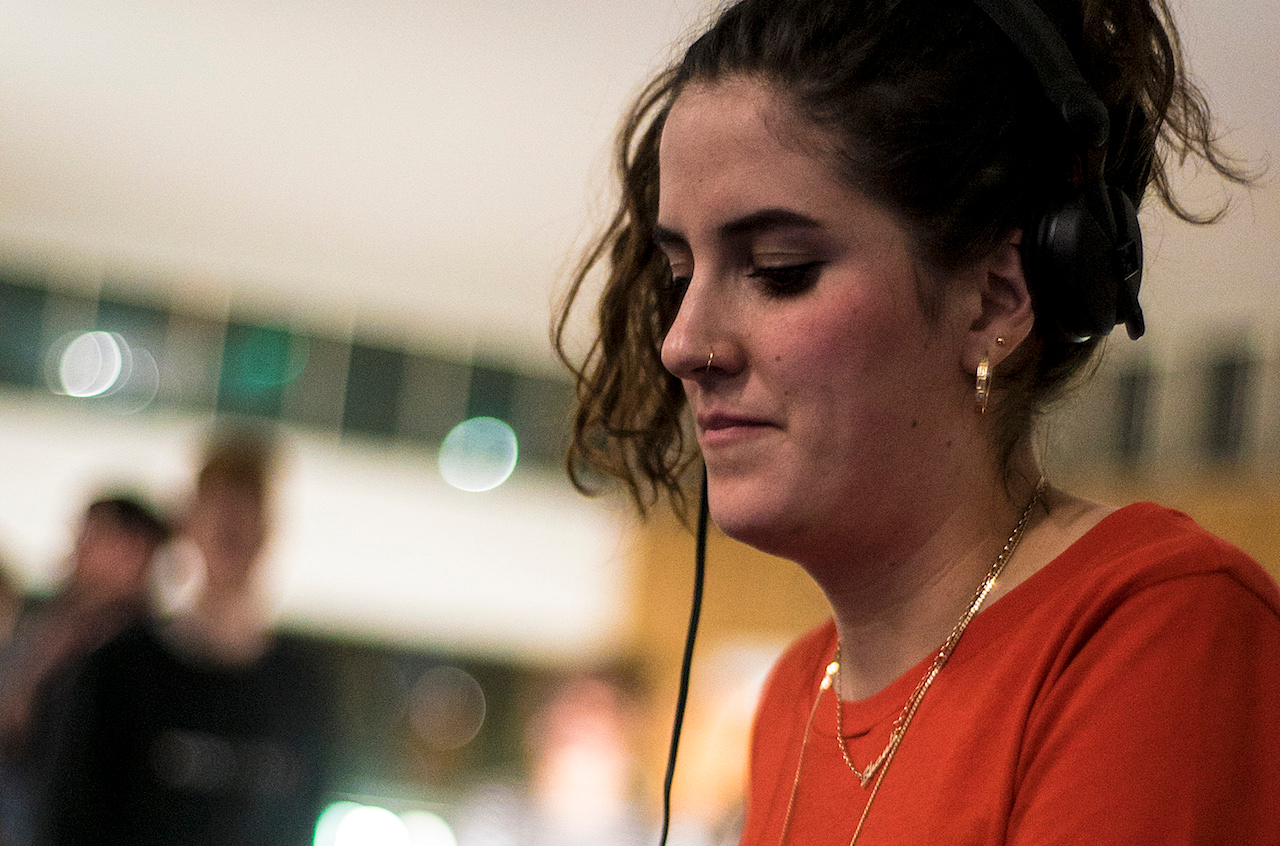- Simple Things is an ambitious undertaking. The Bristol festival has fringe events, which this year included an opening concert with Metronomy and a panel discussion about UK label Ninja Tune, but the thrust of it takes place from Saturday afternoon through Sunday morning, when a dizzying array of performances go down across 14 stages around town.
In previous years, Simple Things had struggled with crowd management, with in-demand acts causing bottlenecks at certain venues. But the pacing felt more measured this time around. The earlier part of the day featured mostly bands at O2 Academy and Colston Hall, from Nadine Shah's politically astute new wave musings to IDLES' ferocious punk. The complex orbiting The Firestation featured a spread of live leftfield electronics, including Klein, Patten, GAIKA and Jlin, alongside clubbier sounds from Binh.
The late hours belonged to the rabbit warren rave complex Lakota, where you could see the likes of Juan Atkins, Willow, Intergalactic Gary and Sassy J throwing down heady club fare from across the spectrum. The organisers outdid themselves with the richness of the programming—it was a lot to take in in just 16 hours, but there were plenty of rewarding moments.
Here are five key performances from across the week.
John Maus
On tour with a backing band for the first time, John Maus was a popular early draw at O2 Academy. His music is loaded with contradiction, all sweet synthesiser tones and grandiose melodies set to heavily treated, beyond-the-grave vocals. This push and pull came across well onstage. In contrast to the tender lilt of his bittersweet songs, Maus cut a frantic image, head-banging, chest-thumping and howling with the urgency of a speed metal vocalist. There was an absurdity about the whole thing, but, somehow, it worked.
At times, the lead synth lines bordered on baroque, and it was here that the clamour of delay and reverb on Maus's vocals made the most sense. New track "The Combine" was a perfect example, almost regal in its pomp and ceremony as sampled choirs, chiming bells and plastic brass roused to support a keyboard line that could have been borrowed from The Human League. There was space for older material as well— "Quantum Leap" was a resounding highlight of a striking set.
Carla Dal Forno
A sound as intimate and shadowy as Carla Dal Forno's will always be sensitive to the space it's performed in. The Lantern, a carpeted venue upstairs in Colston Hall, made for a prime setting to get lost in her gothic post-punk. While the influence of Joy Division looms large in her sound, it's Dal Forno's basslines and vocals that take centre stage, the latter delivered in an English folk reverie that transcends the deadpan style you normally get with this kind of music.
Dal Forno's palette is modest but effective. Her parts were embellished by an ominous, anonymous figure operating equipment to one side, a baseball cap shielding any distinguishable features from view. In between the funereal thrum of live bass, you could hear forlorn synth swells, icy chimes and other such spine-chilling sonics rounding out the tracks, many of which came from her latest EP on Blackest Ever Black, The Garden. "We Shouldn't Have To Wait" left a particularly strong mark, reverberating around my head long after Dal Forno had left the stage.
Shackleton
It's been several years since Shackleton has appeared in Bristol, though his roots in the dubstep scene, and his close relationships with Appleblim, Pinch and others, makes the city a natural fit for the soundsystem maverick. If his recent albums have indicated a progressive move towards a kind of pagan ritual music rendered through electronics, his live set in The Firestation combined those tendencies with a club-ready focus.
Shackleton is at his best when he's drifting away from conventional structures. The majority of his set occupied the kind of transcendental territory that makes him still such a vital artist. There were, though, odd moments where he would steer the ship back towards something approaching convention, reaching for standard 4/4 patterns to carry his organ melodies and rattling percussion. At these points, the strange, mystical energy of Shackleton briefly dissipated, only to reform once the familiar reference points crumbled away.
The Bug feat. Miss Red
The brute force of Kevin Martin's mutant brand of dancehall, ragga and dubstep is impossible to refute. Such sonic intensity may not be everyone's cup of tea, but when the system is up to the task, his basslines can feel borderline apocalyptic. Because he's known for being fiercely stubborn and outspoken about the sound specifications for his shows, promoters rarely cut corners.
Martin began with a 7-inch Wax Attack set, letting rip with classics like "Beats, Bombs, Bass, Weapons" and "Poison Dart." When he switched over to a live setup, the intensity of the low end creeped up, though it really hit its peak when Miss Red took the stage. Plenty of MCs have accompanied Martin over the years, but the Israeli has a seductive yet savage chemistry that suits the limber brutality of the music perfectly. Bathed in red light and smoke, the pair completely brought the house down.
Shanti Celeste
With so many varied musical experiences in the space of one day, there was a strong need for steady, consistent dance music to keep limbs moving into the late hours. The Lakota complex offered plenty of this. Shanti Celeste took the reins for the final set of the night in Coroner's Court 1, a spacious warehouse filled with dazed, swaying bodies.
The set was a homecoming of sorts for Celeste, who made her name in Bristol before moving to Berlin and then London. She played deep into the morning with the relaxed confidence of someone on familiar turf. For me, tracks like Liem's "If Only" felt a little safe, but the overall warmth of her style gently cradled those who wanted to bow out the day smoothly.
Photo credits /
Rebecca Cleal - Lead
Ro Murphy - John Maus, Carla Dal Forno
Andrej Zajac - The Bug
Tom Ham - Shanti Celeste
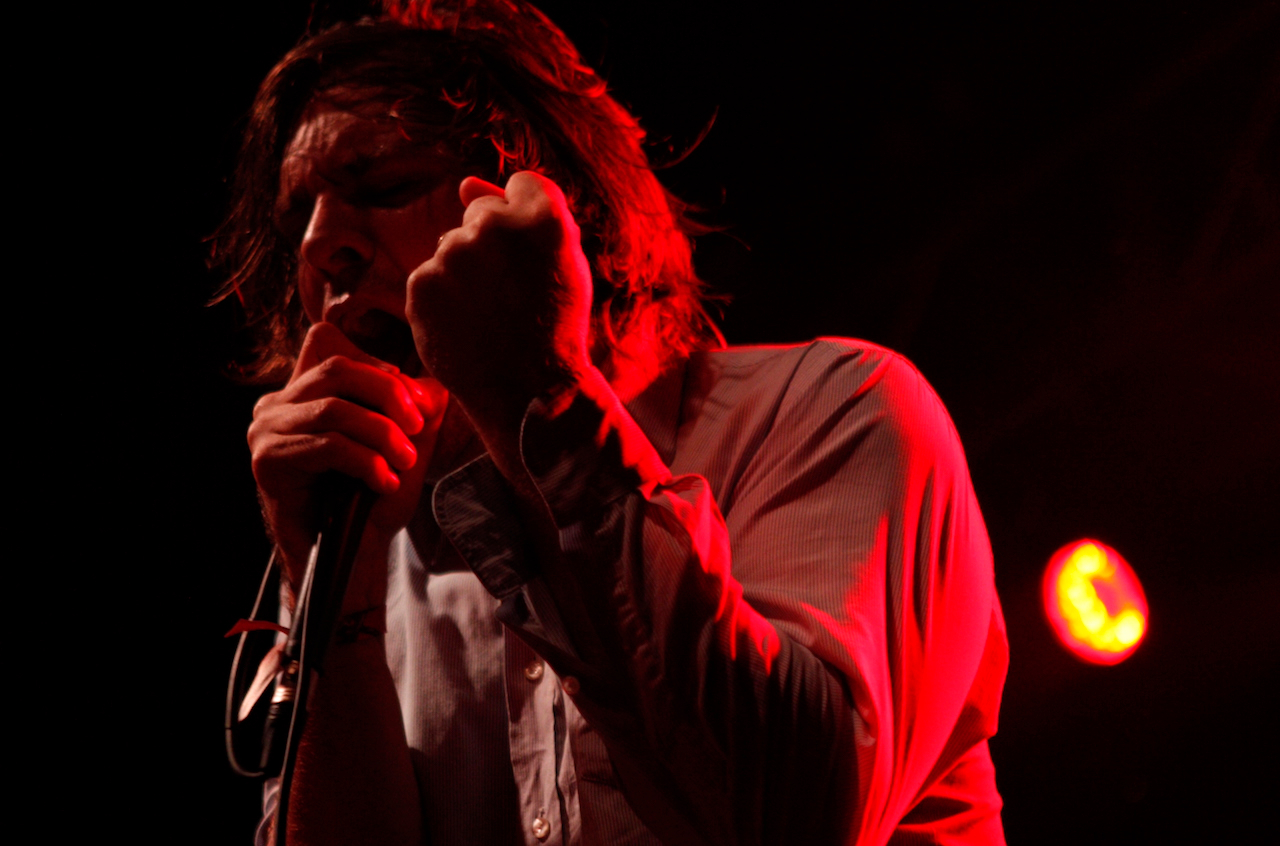 Carla Dal Forno A sound as intimate and shadowy as Carla Dal Forno's will always be sensitive to the space it's performed in. The Lantern, a carpeted venue upstairs in Colston Hall, made for a prime setting to get lost in her gothic post-punk. While the influence of Joy Division looms large in her sound, it's Dal Forno's basslines and vocals that take centre stage, the latter delivered in an English folk reverie that transcends the deadpan style you normally get with this kind of music. Dal Forno's palette is modest but effective. Her parts were embellished by an ominous, anonymous figure operating equipment to one side, a baseball cap shielding any distinguishable features from view. In between the funereal thrum of live bass, you could hear forlorn synth swells, icy chimes and other such spine-chilling sonics rounding out the tracks, many of which came from her latest EP on Blackest Ever Black, The Garden. "We Shouldn't Have To Wait" left a particularly strong mark, reverberating around my head long after Dal Forno had left the stage.
Carla Dal Forno A sound as intimate and shadowy as Carla Dal Forno's will always be sensitive to the space it's performed in. The Lantern, a carpeted venue upstairs in Colston Hall, made for a prime setting to get lost in her gothic post-punk. While the influence of Joy Division looms large in her sound, it's Dal Forno's basslines and vocals that take centre stage, the latter delivered in an English folk reverie that transcends the deadpan style you normally get with this kind of music. Dal Forno's palette is modest but effective. Her parts were embellished by an ominous, anonymous figure operating equipment to one side, a baseball cap shielding any distinguishable features from view. In between the funereal thrum of live bass, you could hear forlorn synth swells, icy chimes and other such spine-chilling sonics rounding out the tracks, many of which came from her latest EP on Blackest Ever Black, The Garden. "We Shouldn't Have To Wait" left a particularly strong mark, reverberating around my head long after Dal Forno had left the stage.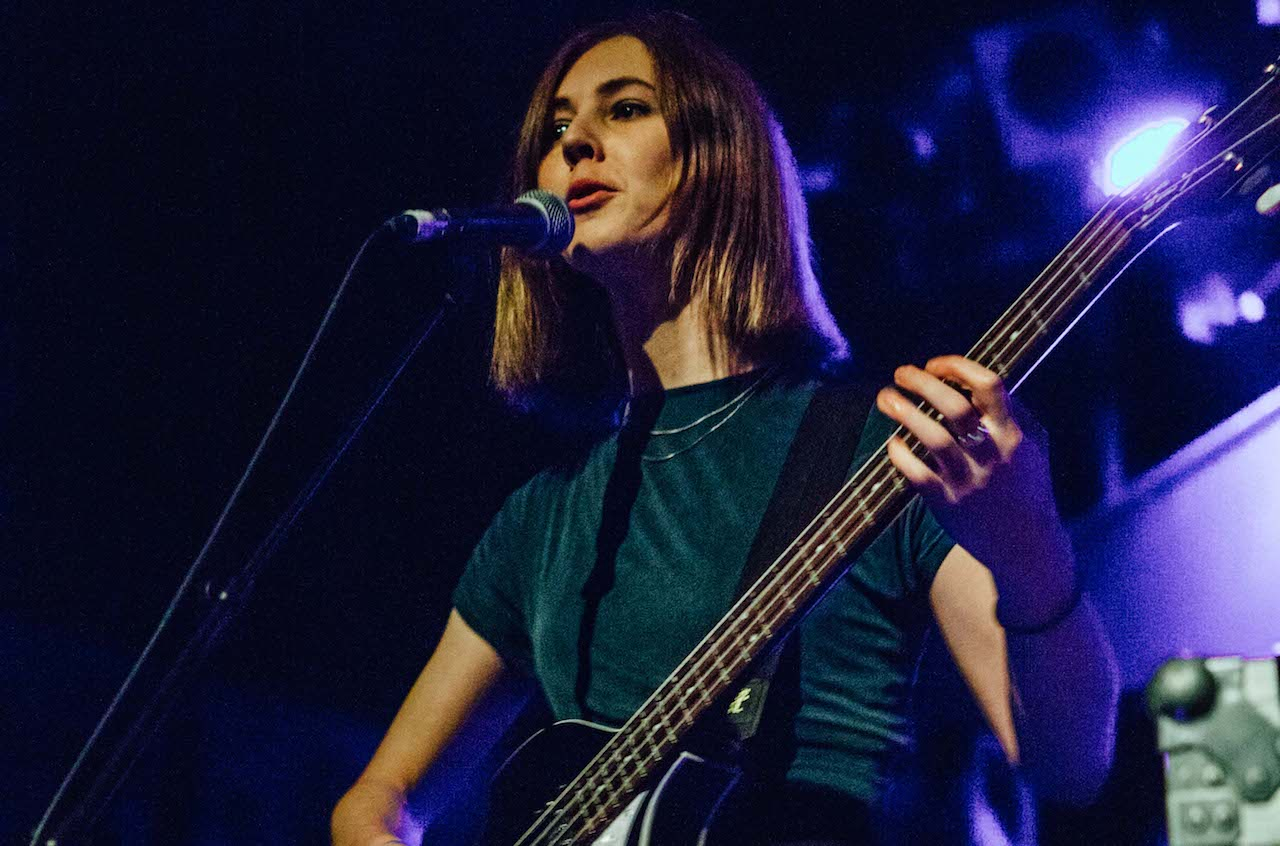 Shackleton It's been several years since Shackleton has appeared in Bristol, though his roots in the dubstep scene, and his close relationships with Appleblim, Pinch and others, makes the city a natural fit for the soundsystem maverick. If his recent albums have indicated a progressive move towards a kind of pagan ritual music rendered through electronics, his live set in The Firestation combined those tendencies with a club-ready focus. Shackleton is at his best when he's drifting away from conventional structures. The majority of his set occupied the kind of transcendental territory that makes him still such a vital artist. There were, though, odd moments where he would steer the ship back towards something approaching convention, reaching for standard 4/4 patterns to carry his organ melodies and rattling percussion. At these points, the strange, mystical energy of Shackleton briefly dissipated, only to reform once the familiar reference points crumbled away.
Shackleton It's been several years since Shackleton has appeared in Bristol, though his roots in the dubstep scene, and his close relationships with Appleblim, Pinch and others, makes the city a natural fit for the soundsystem maverick. If his recent albums have indicated a progressive move towards a kind of pagan ritual music rendered through electronics, his live set in The Firestation combined those tendencies with a club-ready focus. Shackleton is at his best when he's drifting away from conventional structures. The majority of his set occupied the kind of transcendental territory that makes him still such a vital artist. There were, though, odd moments where he would steer the ship back towards something approaching convention, reaching for standard 4/4 patterns to carry his organ melodies and rattling percussion. At these points, the strange, mystical energy of Shackleton briefly dissipated, only to reform once the familiar reference points crumbled away.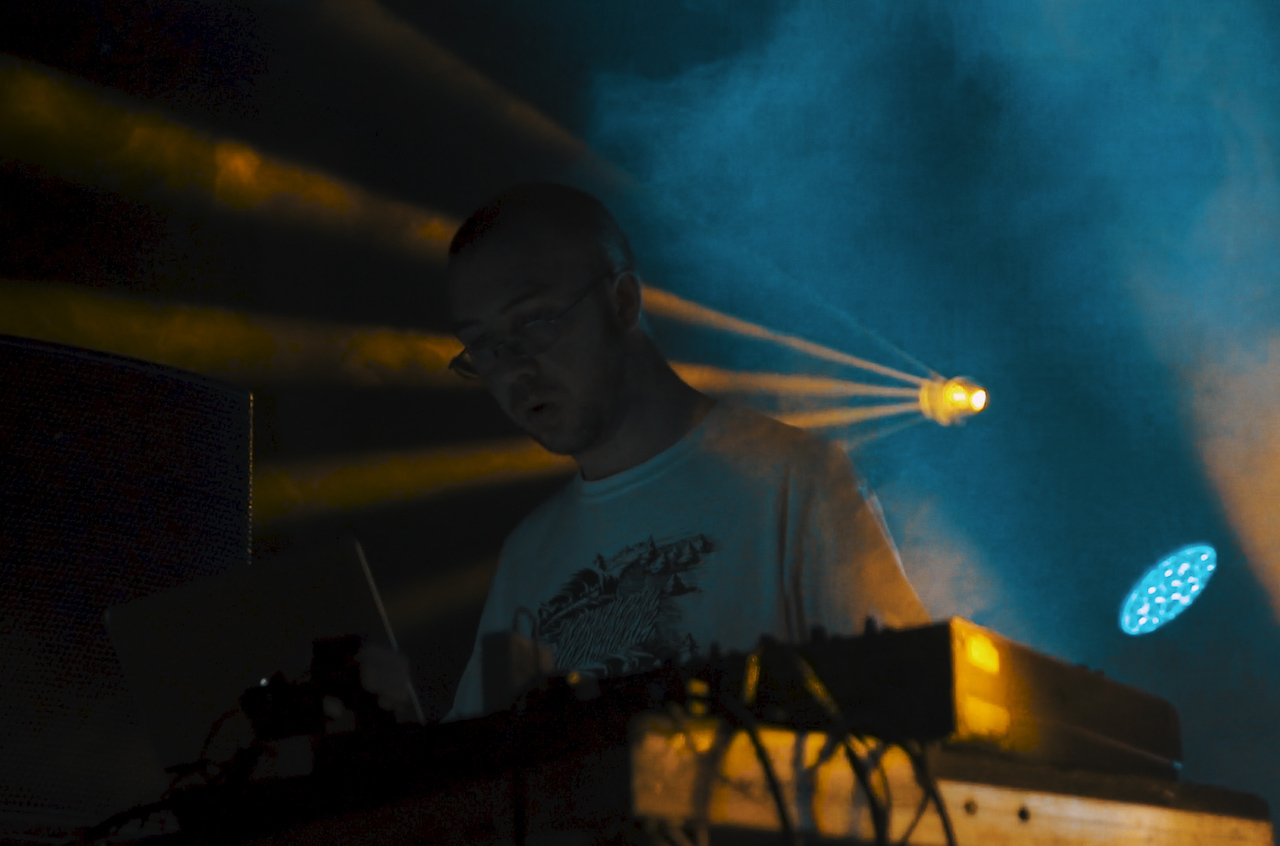 The Bug feat. Miss Red The brute force of Kevin Martin's mutant brand of dancehall, ragga and dubstep is impossible to refute. Such sonic intensity may not be everyone's cup of tea, but when the system is up to the task, his basslines can feel borderline apocalyptic. Because he's known for being fiercely stubborn and outspoken about the sound specifications for his shows, promoters rarely cut corners. Martin began with a 7-inch Wax Attack set, letting rip with classics like "Beats, Bombs, Bass, Weapons" and "Poison Dart." When he switched over to a live setup, the intensity of the low end creeped up, though it really hit its peak when Miss Red took the stage. Plenty of MCs have accompanied Martin over the years, but the Israeli has a seductive yet savage chemistry that suits the limber brutality of the music perfectly. Bathed in red light and smoke, the pair completely brought the house down.
The Bug feat. Miss Red The brute force of Kevin Martin's mutant brand of dancehall, ragga and dubstep is impossible to refute. Such sonic intensity may not be everyone's cup of tea, but when the system is up to the task, his basslines can feel borderline apocalyptic. Because he's known for being fiercely stubborn and outspoken about the sound specifications for his shows, promoters rarely cut corners. Martin began with a 7-inch Wax Attack set, letting rip with classics like "Beats, Bombs, Bass, Weapons" and "Poison Dart." When he switched over to a live setup, the intensity of the low end creeped up, though it really hit its peak when Miss Red took the stage. Plenty of MCs have accompanied Martin over the years, but the Israeli has a seductive yet savage chemistry that suits the limber brutality of the music perfectly. Bathed in red light and smoke, the pair completely brought the house down.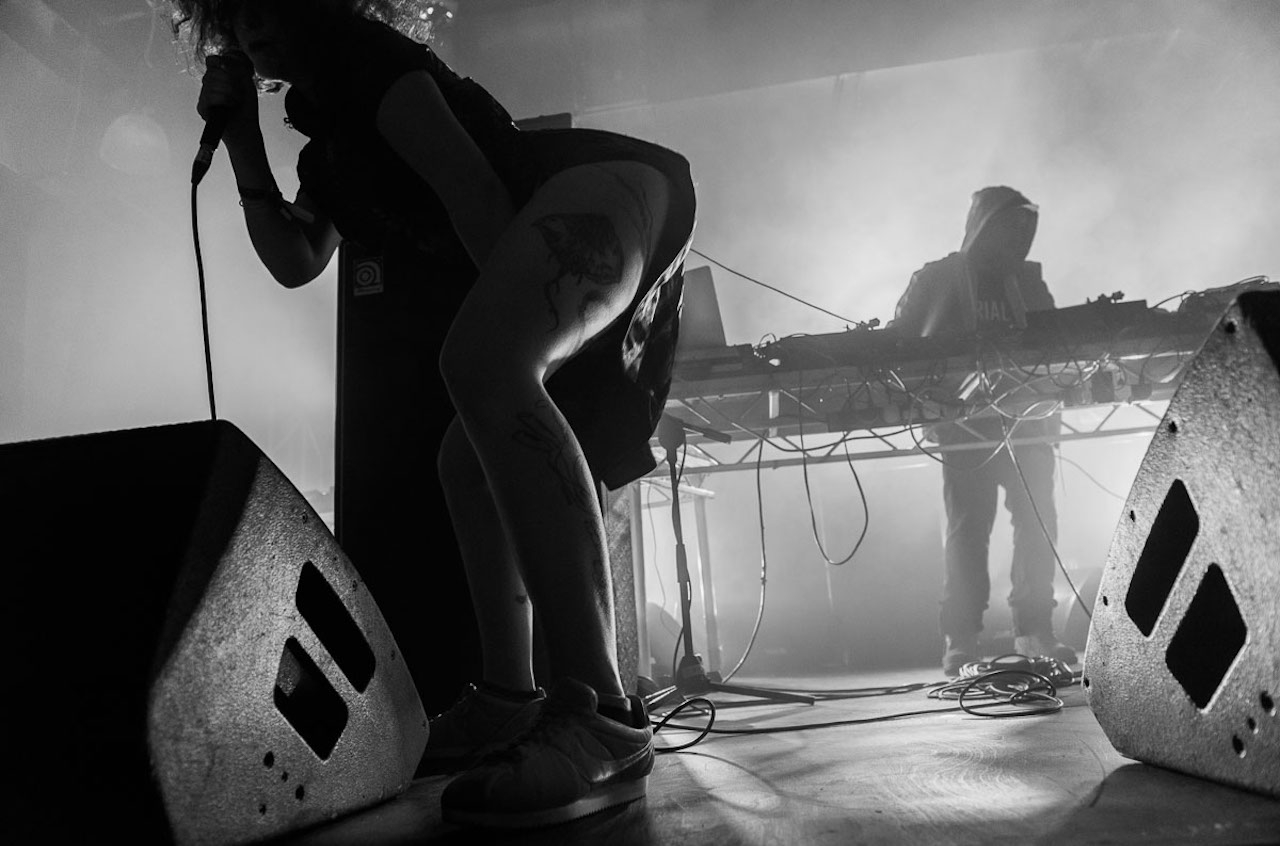 Shanti Celeste With so many varied musical experiences in the space of one day, there was a strong need for steady, consistent dance music to keep limbs moving into the late hours. The Lakota complex offered plenty of this. Shanti Celeste took the reins for the final set of the night in Coroner's Court 1, a spacious warehouse filled with dazed, swaying bodies. The set was a homecoming of sorts for Celeste, who made her name in Bristol before moving to Berlin and then London. She played deep into the morning with the relaxed confidence of someone on familiar turf. For me, tracks like Liem's "If Only" felt a little safe, but the overall warmth of her style gently cradled those who wanted to bow out the day smoothly. Photo credits / Rebecca Cleal - Lead Ro Murphy - John Maus, Carla Dal Forno Andrej Zajac - The Bug Tom Ham - Shanti Celeste
Shanti Celeste With so many varied musical experiences in the space of one day, there was a strong need for steady, consistent dance music to keep limbs moving into the late hours. The Lakota complex offered plenty of this. Shanti Celeste took the reins for the final set of the night in Coroner's Court 1, a spacious warehouse filled with dazed, swaying bodies. The set was a homecoming of sorts for Celeste, who made her name in Bristol before moving to Berlin and then London. She played deep into the morning with the relaxed confidence of someone on familiar turf. For me, tracks like Liem's "If Only" felt a little safe, but the overall warmth of her style gently cradled those who wanted to bow out the day smoothly. Photo credits / Rebecca Cleal - Lead Ro Murphy - John Maus, Carla Dal Forno Andrej Zajac - The Bug Tom Ham - Shanti Celeste